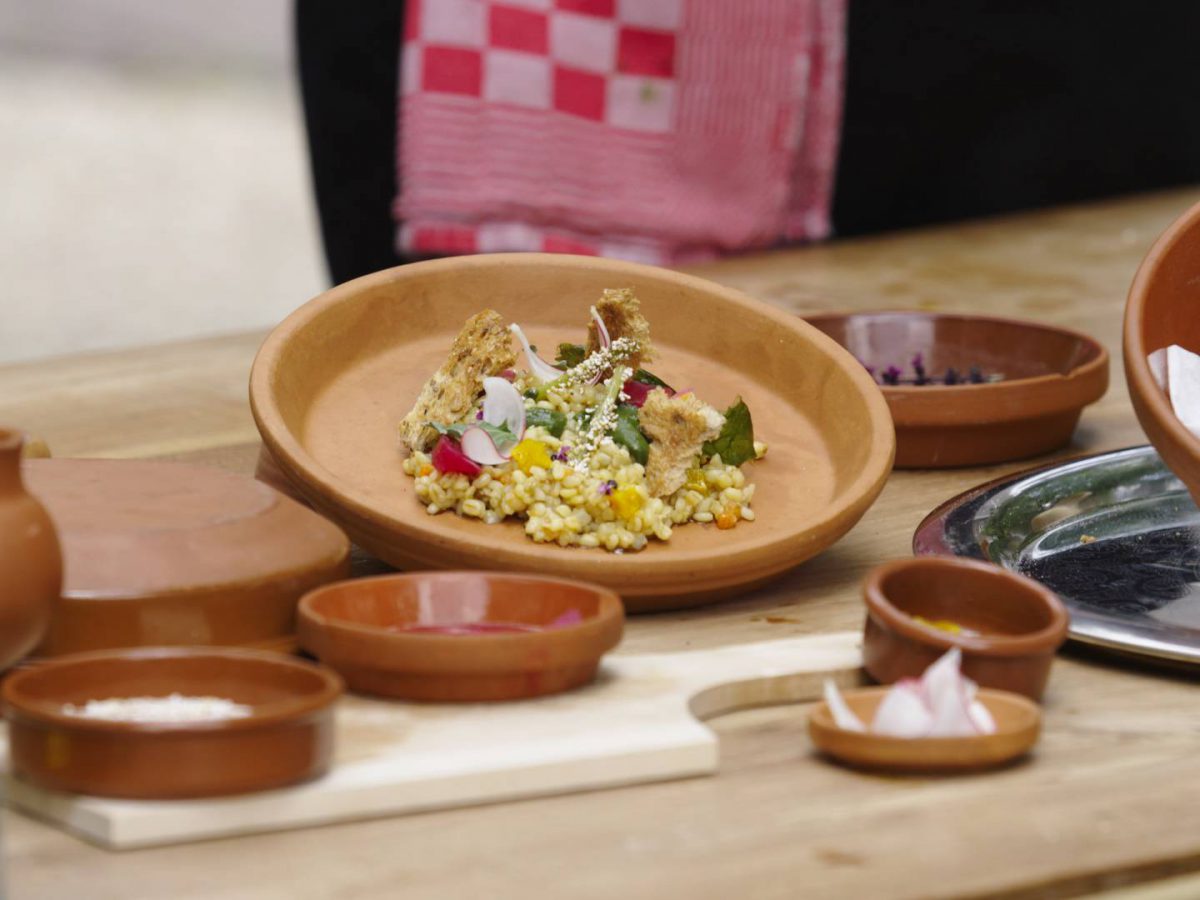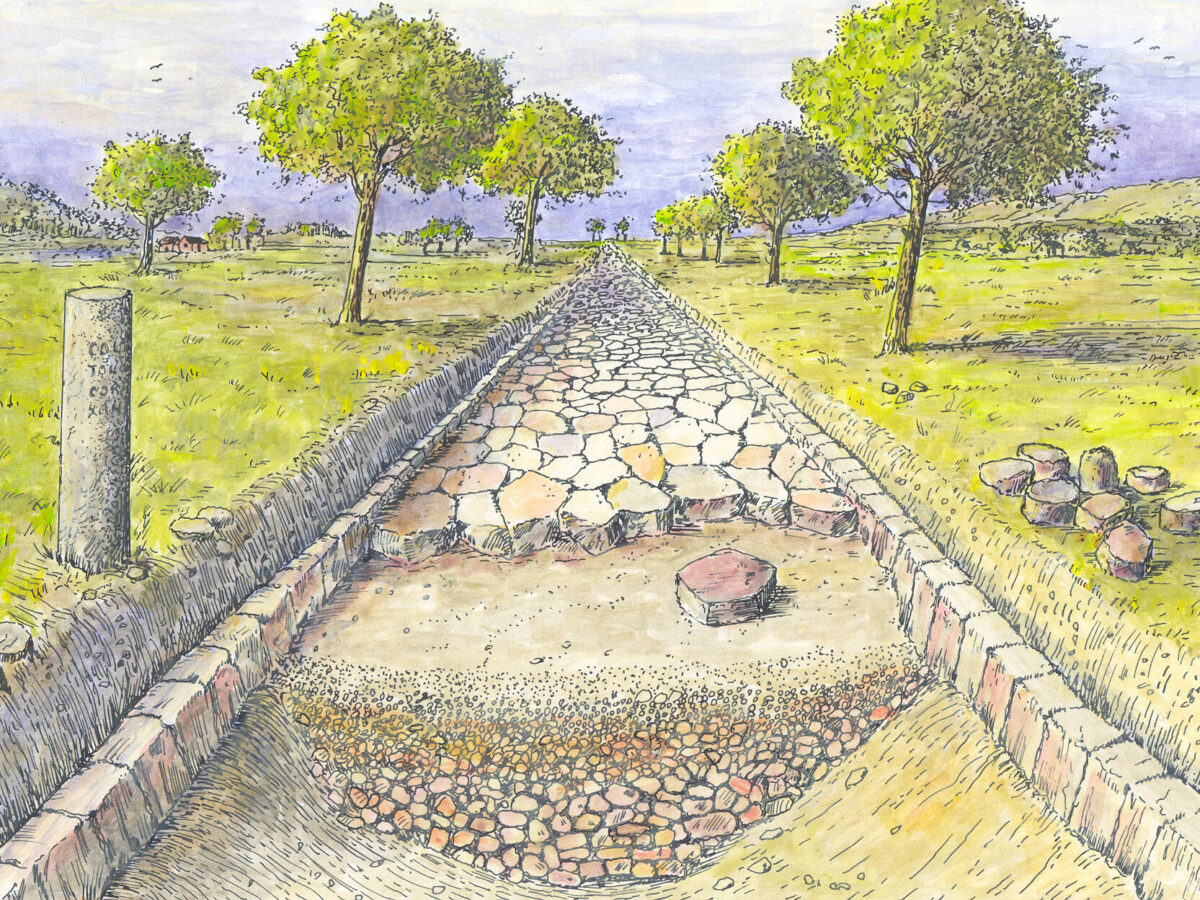L1 recipe – Roman puls with a summer twist
Author: Tim Feijs - Head Chef Derlon Maastricht
Photography: Via Belgica

The Roman kitchen is quite simple, and it is exactly this simplicity that appeals to chef Tim from Derlon Hotel Maastricht. In Roman times, people ate a lot of grains and vegetables. Puls is a savoury stew made with grains. It comes from Roman times and is still part of the old Italian kitchen today. It was once known as poor people’s food, but with the addition of vegetables it becomes a complete and healthy meal.
For 4 people
- 1 carrot
- 2 shallots
- 2 garlic cloves
- ½ kohlrabi
- 1 leek
- 1 tsp caraway seeds
- 70 g smoked bacon
- 170 g bulgur
- 350 g chicken stock
- Olive oil, dry white wine, pepper, salt
Clean all the vegetables, peel them if needed, and cut into small cubes of about half a centimeter. Keep the kohlrabi stems and leaves for later. Slice the bacon and freeze it lightly; this way it is easier to cut the meat into small cubes.
Put a pan on medium-high heat and add plenty of olive oil. Fry the vegetables and the bacon. Season with salt and pepper. Meanwhile, rinse the bulgur under running water and drain in a sieve. Add the caraway seeds to the pan and fry for one more minute. Then add the bulgur. Stir well and deglaze with a good splash of white wine. This preparation is based on a risotto. When the grains have absorbed the wine, lower the heat and add the stock little by little, stirring occasionally. The bulgur will be ready in about 15–20 minutes.
Garnishes
- Kohlrabi stems
Cut the stems into equal lengths. Heat a pan on medium-high heat with some butter. Fry the stems, season with salt and pepper, and add a splash of stock. Lower the heat and cook for about 5 minutes. - Fried kohlrabi leaves
Heat a fryer to 160 °C. Put the leaves in the basket and lower carefully. Be careful: the leaves contain a lot of water, which reacts quickly in the hot oil and causes splattering. Within 30 seconds enough water will have evaporated, and the leaves can be placed on kitchen paper. Season with a little salt. - Sweet and sour kohlrabi
Snijd de overgebleven koolrabi in blokjes van ongeveer 1 cm groot. Gaar in zoet-zuur met een klein beetje kurkuma. - Zoet zuur chioggiabiet
Cut the remaining kohlrabi into cubes of about 1 cm. Cook in a sweet-and-sour liquid with a little turmeric. - Kale cream
Cut the kale into large pieces and blanch in salted water for about 2 minutes, then cool directly in ice water. Squeeze out well and drain in a sieve. In a small pan, fry 2 shallots and 3 garlic cloves. Deglaze with a splash of vegetable stock and cook gently. Purée everything in a blender, adding a little more stock if needed. Season with salt, pepper, a sprig of lovage, and a few drops of colatura di acciughe (fermented anchovy sauce). - Purple basil flowers
In spring, when herbs and flowers begin to bloom, purple basil grows a tall stem with small flower buds. Use the flowers when they open. - Popped amaranth
Heat a small pan over high heat. Keep a lid ready. Add a spoonful of amaranth, cover immediately, and shake the pan so the grains keep moving. You will hear the amaranth pop, like popcorn. When the grains are white, transfer to a bowl and set aside. - White radish
Cut the radish into thin slices (use a mandoline if possible). Place in ice water for a short time to keep them crisp. - Colatura di Acciughe fermented fish sauce)
- Sweet-and-sour liquid
Mix equal parts white wine, white wine vinegar, and sugar. Bring to the boil and add orange, bay leaf, star anise, and coriander seed for extra flavour.
In summer, the puls can be served as a cold salad, but it is also delicious warm. Then add some extra Parmesan cheese and cream to make it richer.
Prefer vegetarian? Use vegetable stock instead of chicken stock and leave out the bacon.

